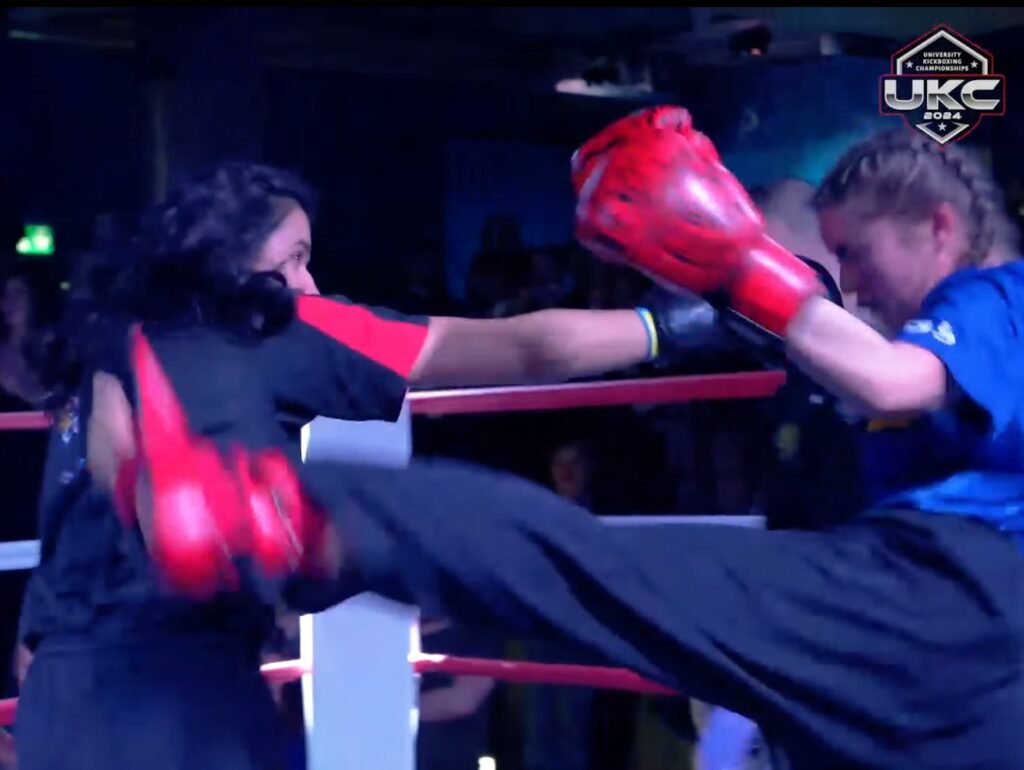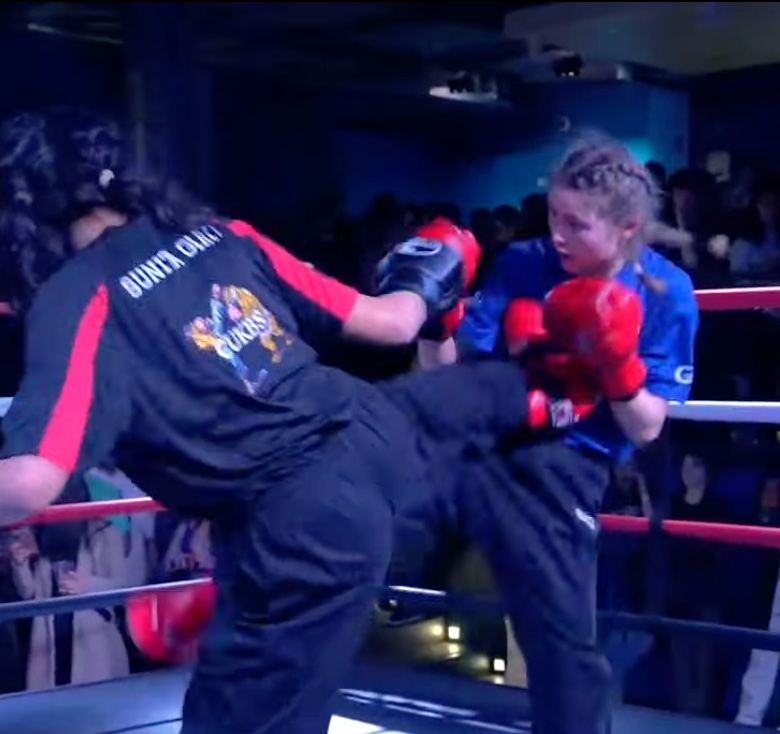Putting the boxing back into kickboxing: what I learnt from attending boxing sessions as a kickboxer.
I’m a kickboxer. Therefore, I wasn’t too nervous when my coach invited me to my first boxing sparring session. Sure, an unfamiliar environment, unknown opponent, new coaches, and dodgy bike to travel with was scary, but the actual sparring– I wouldn’t have said boxing fazed me. How little did I know? I stepped out of that ring after an exhausting 6 minutes, rightly humbled by a much younger opponent, and with a new-found appreciation for boxing. I realised then that I needed to supplement my martial arts skills with boxing to improve.
Kickboxing differs from boxing in that kicking (generally above the hips for American style) is allowed and is often worth more points. For this reason, learning to kick properly is often intensely covered by most coaches and clubs. A focus on kicks is useful as they have more power, are often worth more points, and reduce the need to place the kickboxer in dangerous close-range situations. However, this emphasis on kicking comes at the cost of neglecting practice in boxing skills. I have found that this leads to difficulty when faced with pressurising opponents or those who are good at evading kicks (I have fought them, and it is not pleasant to have your lovely round kick be brushed aside and returned with a right cross to the head). Before improving my boxing by training at an amateur boxing club and taking part in sparring sessions, I too was abysmal when placed under pressure and limited in the techniques I used.
From personal experience, I know the importance of boxing during a match. I experienced this first-hand when I was competing in the final round of the National University Kickboxing Championships. My opponent was a skilled kickboxer, both fast and with excellent timing. Until I reached the final, I had been fighting like a kickboxer- mainly using roundhouse kick and jab combos, with some push kicks when needed. However, while watching my opponent’s previous fights, my coach and I realised I couldn’t afford to fight like a kickboxer if I wanted to win. Instead, we focused on boxing techniques in the warm-up, how to get in close range and take as many points as possible. This strategy helped me win my final match, against an opponent who possessed much better kicks than I did.




The two primary advantages I believe training specifically in boxing provides are:
- The ability to flexibly adapt my fighting style, and
- A way to target the Achilles’ heel of most kickboxers- getting up close and personal.
Flexibly adapting your fighting style to suit your opponent can make or break you in competitions. It can surprise an opponent, leaving them unprepared for your attacks. It also provides a backup plan for dealing with different types of opponents.
Training multiple martial arts undoubtedly improves flexibility in fighting, provided you can see what techniques your opponent uses and exploit them. On the other hand, training in multiple martial arts can also leave you vulnerable to attacks if you are too set in your ways- for instance, the wide stance of boxing would leave a kickboxer vulnerable to front kicks. Therefore, it is critical to actively engage and think about how your body is moving in each session, and why. Boxing and kickboxing are a great combination due to the large crossover between both styles and the propensity for kickboxing to turn more towards ‘boxing’ when closer to your opponent.
Kickboxers often neglect boxing in favour of kicking, but this leads to a skill discrepancy that can be exploited by someone who can box. Getting by with good kicking alone is only really ever possible if your opponent is also unable to box, and if they are shorter or the same height as you- being unable to box effectively will put you at a severe disadvantage the moment someone is taller or can get into close range. Luckily for me and other boxing-trained kickboxers, you can use this to your advantage by becoming good at getting into boxing range and applying pressure on your opponent. This can often give you the upper hand when sparring. Additionally, being put into a close-range boxing match can be unnerving for most kickboxers (it was, and often still is for me), leading to them retreating and being unable to fight as effectively, while limiting the techniques they use.
This isn’t to suggest though, that boxers have all the fun- kickboxing can also complement boxing. The week after my first spar at the boxing club, I returned and sparred with the same opponent. This time, I was better prepared, looking forward to a few rounds where I could test my new boxing techniques. Often, kickboxers are trained to be comfortable in both left and right stances, providing the ability to switch stances as needed throughout a round. I started by doing this unconsciously during my second boxing spar and discovered how much it threw off my orthodox-trained opponent, so I started consciously doing it. This is just one aspect of my boxing I borrow from kickboxing, but it highlights again how both sports can complement each other.
I was incredibly nervous when I stepped into my final fight for the University Kickboxing Championships, despite having a supportive team. But having that boxing experience meant I felt and was more prepared for the final than I would otherwise have been. Although we may have our differences (and which athlete doesn’t think their discipline is the best?) Ultimately, there is a lot that can be learnt from a multidisciplinary approach, for both kickboxers and boxers. So maybe sign up for that boxing class you’ve been avoiding- you may learn something new!

